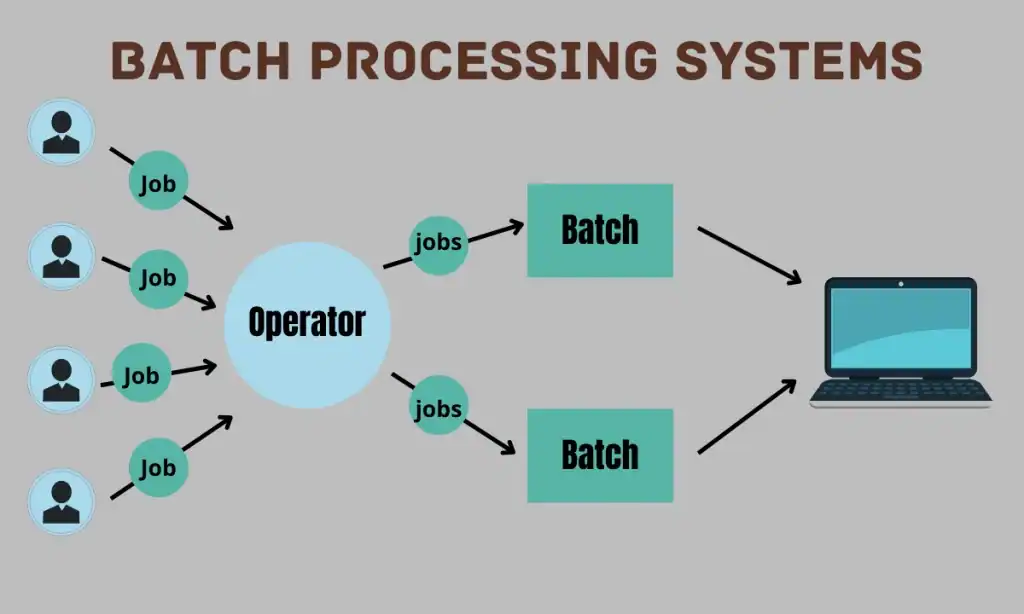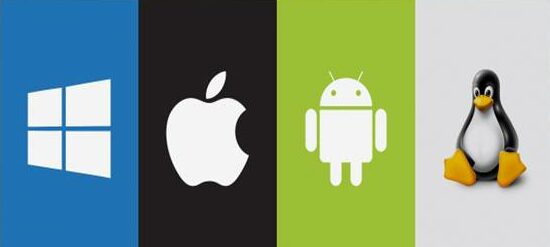Operating systems are the foundation on which all software functions. They serve as the interface between hardware and applications, facilitating resource management and communication. As technology has advanced, the diversity of computing devices has grown exponentially, each with distinct needs. Correspondingly, the landscape of operating system has expanded to cater to these varied environments. In this in-depth exploration, we will examine the significant operating system categories in detail and how they uniquely support the computing ecosystems they power.
Single-User Operating Systems
Single-user operating systems are designed for individual use on personal computers. Notable examples include Windows, macOS, and desktop Linux distributions. These systems provide user-friendly graphical interfaces optimized for content consumption, communication, and productivity applications. They incorporate features like file management, peripheral support, and multimedia capabilities. Single-user operating system offer security models centered on individual user accounts and privileges. As personal devices remain fundamental computing platforms, these operating system will continue evolving new capabilities and ease of use.
Multi-User Operating Systems
Where single-user systems focus on individual access, multi-user operating systems facilitate simultaneous interaction from multiple authenticated accounts. Servers, mainframes, and departmental workstations commonly rely on multi-user operating systems. Key examples include various Unix/Linux distributions and proprietary server operating systems. These systems employ robust user management, permissions, and resource allocation models to share resources among concurrent users securely. Advanced features involve clustering, high availability, and workload scheduling suited for mission-critical enterprise environments.
Real-Time Operating Systems (RTOS)
Timing and predictability are mission-critical in real-time embedded systems. RTOS ensures deterministic execution of tasks within strict deadlines by prioritizing time-sensitive processes. Standard RTOS includes FreeRTOS, VxWorks, QNX and proprietary solutions. They offer small memory footprints, fast interrupt response and preemptive multitasking. RTOS are integral to industrial automation, medical devices, avionics and other applications where latency could impact safety or functionality. Their deterministic nature makes them well-suited for safety-critical systems with real-time constraints.
Batch Processing Operating System

Large volumes of repetitive tasks are more efficiently processed in batches rather than individually. Batch operating systems group similar jobs and run them sequentially without user intervention. Mainframe computers traditionally relied on these systems for payroll, billing and scientific computing tasks. Batch processing maximizes throughput by consolidating repetitive workloads and optimizing system utilization. While less common now, batch principles still underlie distributed computing frameworks.
Distributed Operating System
As networked devices proliferate, distributed operating system seamlessly share computing power. Notable examples include Google’s Chrome OS and container-based Linux distributions. Distributed operating system enable scalable, high-performance cloud platforms by facilitating communication and coordinated resource scheduling across interconnected nodes. Emerging distributed ledger technologies also leverage these principles. Advanced distributed operating systems employ self-healing capabilities, ensuring continuity even if nodes fail. Their scale-out architectures will remain crucial as edge and fog computing evolves.
Mobile Operating Systems
Smartphones and tablets rely on mobile operating systems optimized for portable devices. Leaders like Android and iOS power the majority of these platforms. Mobile operating systems offer streamlined interfaces and intuitive navigation suited to touchscreens. They also incorporate power management, security models, and connectivity functions for wireless networks and location services. An expansive ecosystem of third-party applications has transformed these operating systems into multifunctional platforms. As mobile devices remain ubiquitous, their operating systems will continue integrating new form factors and technologies.
Network Operating System
Network operating systems manage shared networking infrastructure and facilitate communication between connected devices. Typical examples for enterprise include Windows Server, Novell NetWare, and various Linux/Unix distributions. Essential functions involve user authentication, file/printer sharing, traffic control, and protocol support across local and wide area networks. Advanced network operating system also offer virtualization, software-defined networking, and automation. Their role remains pivotal as organizations increasingly rely on cloud-based and hybrid network architectures.
Embedded Operating System
Embedded systems power various devices, from household appliances to industrial machines. Their operating systems are tailored for resource-constrained environments with minimal memory and power usage. Standard embedded operating systems involve proprietary solutions, FreeRTOS, and embedded Linux variants. They offer real-time functionality, small code sizes, and peripheral support for specialized tasks. As Internet of Things technologies proliferate, embedded operating system will continue facilitating connectivity and edge intelligence capabilities within constrained devices.
Multitasking Operating Systems
Multitasking enables running multiple programs concurrently through efficient scheduling of CPU resources between tasks. Modern general-purpose operating system universally incorporate preemptive multitasking models. It allows seamless multitasking of applications for improved productivity. Advanced implementations also incorporate process prioritization, memory protection and preemption to ensure stability while optimizing resource allocation between tasks. Multitasking remains core to delivering responsive computing experiences across personal, mobile and server platforms.
Time-Sharing Operating Systems
Time-sharing operating system enable multiple users to access a system simultaneously through fast task-switching between processes. Early mainframe systems pioneered this approach to maximize resource utilization. Modern variants power multi-user environments through user authentication, permissions and rapid context switching between processes. They allocate CPU time slices in a round-robin fashion to give each user the illusion of dedicated access. Time-sharing remains integral to server operating systems, supporting many concurrent users through virtualization and containerization.
Multimedia Operating Systems
Specialized multimedia operating systems are optimized for audio/video editing, 3D modeling, and graphics/animation work. They offer robust support for high-performance peripherals, multimedia file formats, and creative professional software/plug-ins. Examples include proprietary solutions from Apple and Adobe targeted at creative professionals. Multimedia operating systems ensure smooth workflows for time-sensitive media production tasks.
Gaming Operating System

Gaming operating systems prioritize low-latency, high-frame-rate performance for responsive gameplay. They integrate graphics APIs, audio processing, and peripherals support tailored for immersive gaming. SteamOS and other Linux-based distributions also target gamers. As gaming PCs and consoles become more powerful multimedia devices, their operating systems will continue integrating entertainment applications and streaming capabilities.
Microkernel Operating Systems
Microkernel architectures minimize the operating system kernel to only core functionality for enhanced security and modularity. Additional services run in user space as processes. Examples include QNX, MINIX, and Apple’s Darwin. They facilitate flexible, componentized design through message passing between isolated modules. Microkernel principles underlie the emerging blockchain-based decentralized operating system.
Container Operating Systems
Containerization enables operating system-level virtualization through isolated user spaces and namespaces. Container operating system facilitate the deployment of self-contained applications without relying on an entire virtual machine. Prominent examples include Docker Engine, Kubernetes, and container-optimized Linux distributions. As container adoption grows across cloud-native applications, container operating systems will play a pivotal role in automating infrastructure.
Unikernel Operating Systems
Unikernels take OS virtualization further by compiling the entire runtime of an application, including its dependencies, into a single executable specifically for that program. It results in tiny, specialized system images. Examples include MirageOS and OSv. Unikernels offer security and minimalism well-suited for functions like edge/IoT devices, serverless computing and blockchain nodes. Their role will expand as specialized systems proliferate.
Emerging Trends
Operating systems continue adapting to technological change. Specialized systems optimized for edge/fog computing, blockchain networks, and quantum computing will emerge. Hypervisors and containers will increasingly virtualize operating system instances. Self-driving operating system leveraging AI/ML will automate tasks. Blockchain-based decentralized operating system facilitate distributed trust and transparency. As attack surfaces grow, security-centric operating systems will integrate advanced defenses. Operating systems will remain dynamic in addressing evolving requirements across the diverse and expanding computing landscape.
Partner with ZZ Servers for Customized Operating System Solutions
Understanding the diverse operating system landscape is crucial for powering your technology needs now and in the future. With over 17 years of experience, the experts at ZZ Servers can help evaluate your unique infrastructure requirements, budget, and security posture to recommend the optimal operating system solutions for your business. Whether you need assistance selecting, deploying, or managing operating systems across on-premises servers or private/hybrid clouds, ZZ Servers delivers predictable, documented results. Contact their team of IT professionals today at 800-796-3574 to discuss how they can ensure your operating systems are configured securely and allow you to focus on core operations.
Conclusion
The operating system ecosystem exemplifies the diversity and specialization required to power our technology-driven world. From personal computers to embedded systems to cloud infrastructures, distinct operating system types optimize functionality for varied environments. Their roles in coordinating hardware, software and user interactions remain fundamental. As technology innovations introduce new paradigms, operating systems will continue adapting through innovation to strengthen the foundation of computing. Understanding their characteristics, strengths and applications is critical to making informed choices aligned with unique needs.
Frequently Asked Questions
u003cstrongu003eWhat are the key differences between operating system types?u003c/strongu003e
The various OS types are optimized for different environments and uses. Single-user systems prioritize consumer usability, while multi-user OS facilitates secure sharing for servers/workstations. Real-time OS ensures deterministic execution for embedded/IoT devices. Distributed systems seamlessly pool resources across cloud infrastructures. Understanding the specialized functions of each type helps choose the right solution.
u003cstrongu003eHow do I select an operating system for a new project?u003c/strongu003e
Consider factors like intended hardware, workloads, security needs, licensing and costs. Evaluate both open-source and commercial options through hands-on testing and research. Critical criteria include scalability, feature support, upgrade paths, and community longevity to verify the OS will meet evolving requirements over time. Outsourcing selection to experts can help navigate complex considerations.
u003cstrongu003eWhat skills are required for OS management and administration?u003c/strongu003e
Needs vary by solution and scale. Commercial OS often requires less technical expertise but higher costs. Open-source OS involves steeper learning through robust documentation and support communities. Training ensures optimizing performance over the OS lifecycle. Outsourcing management to managed service providers is an affordable option for some.
u003cstrongu003eHow do containerization and virtualization impact operating systems?u003c/strongu003e
These technologies enable more flexible application deployment across diverse infrastructures. Containers optimize OS resources through isolated user spaces, while hypervisors virtualize hardware. Both are transforming infrastructure automation and portability. Specialized container OS now facilitates containerized application lifecycles from development to production. Virtualization enhances hardware abstraction for private/hybrid clouds
u003cstrongu003eWhat emerging OS technologies should I follow for future-proofing?u003c/strongu003e
Areas like edge/fog computing, blockchain, AI/ML, serverless architectures and quantum computing will drive innovation. Specialized systems for IoT/embedded devices and converged solutions integrating tools like containers and virtual machines will also evolve. Watch for decentralized operating systems facilitating distributed trust models and AI-enhanced automation of routine tasks.


